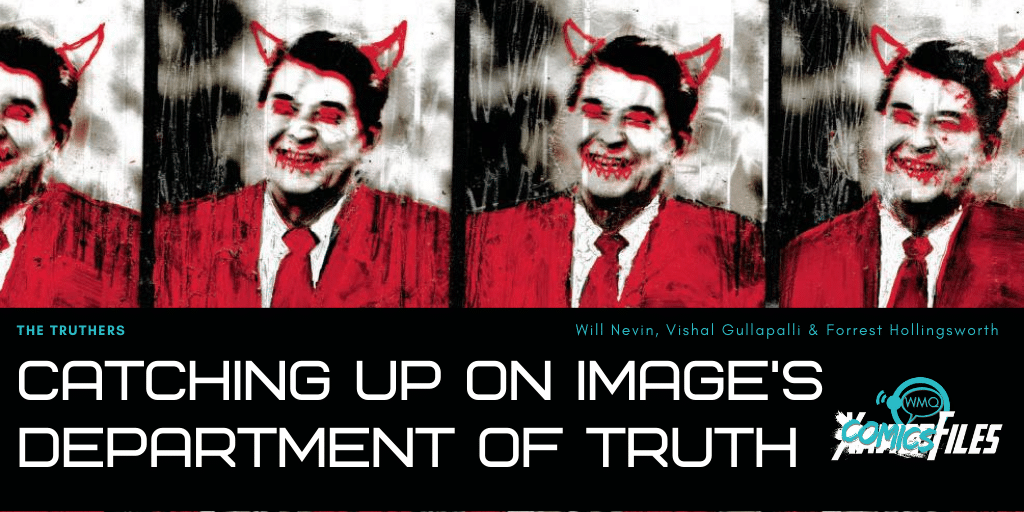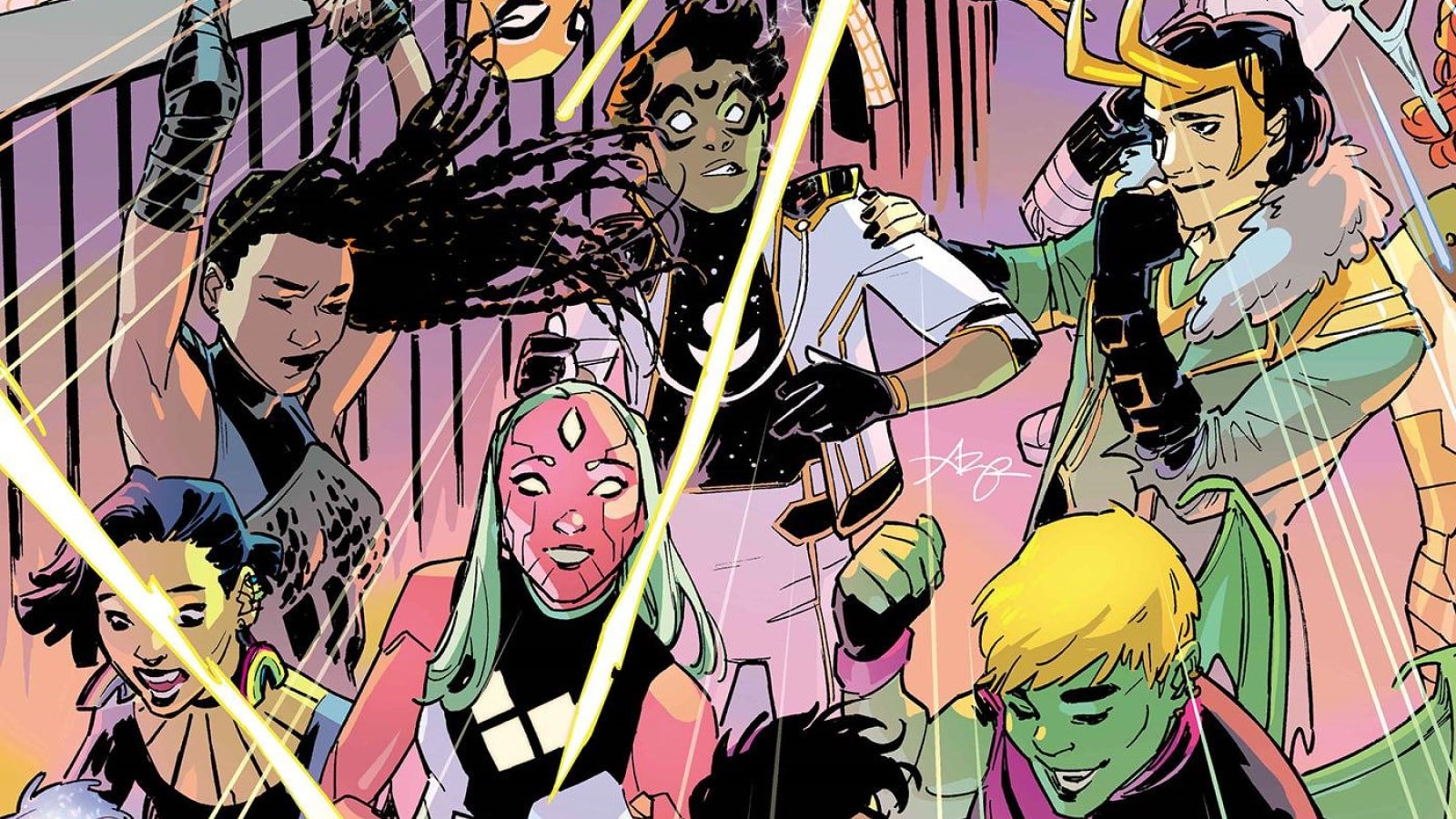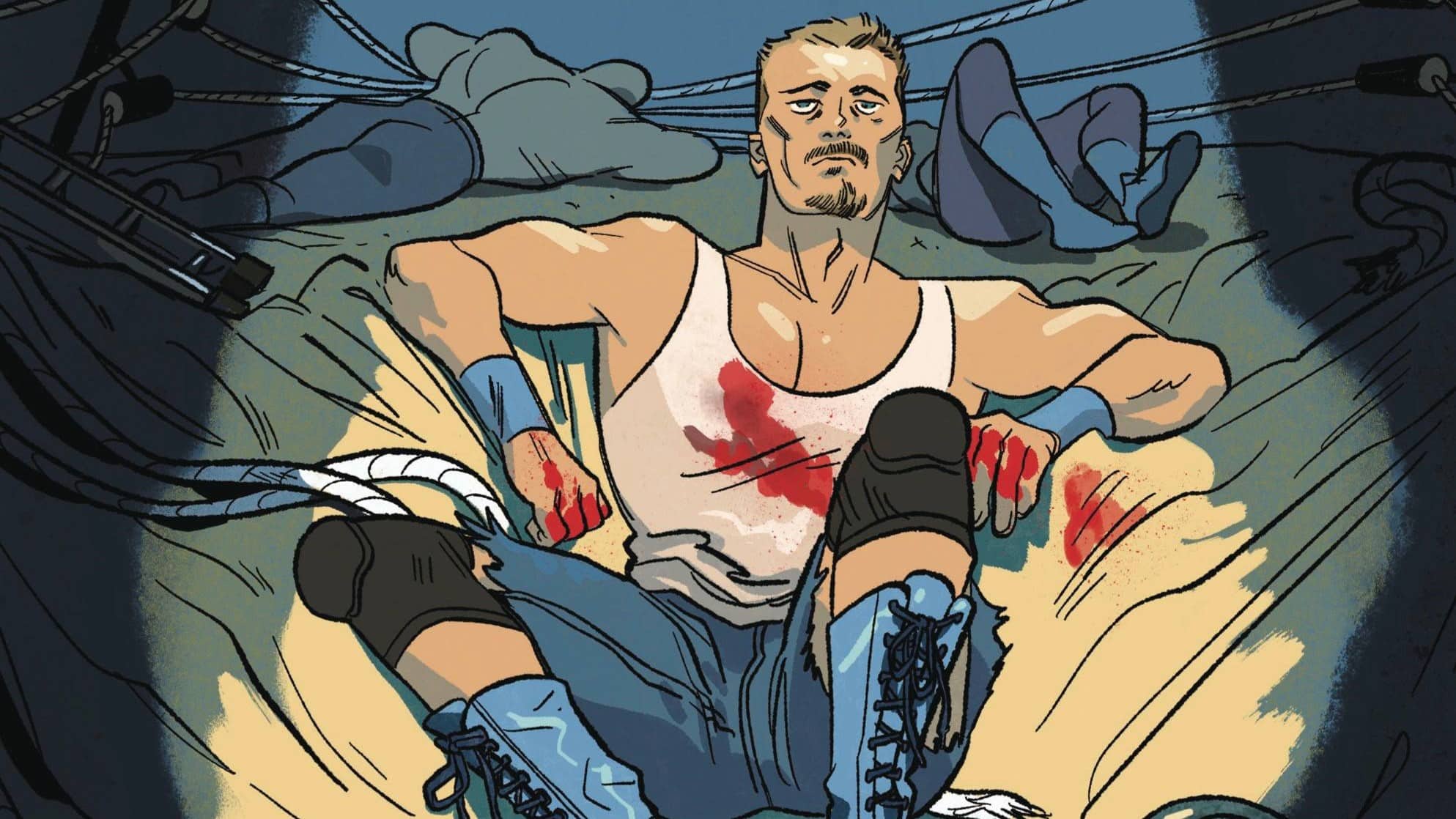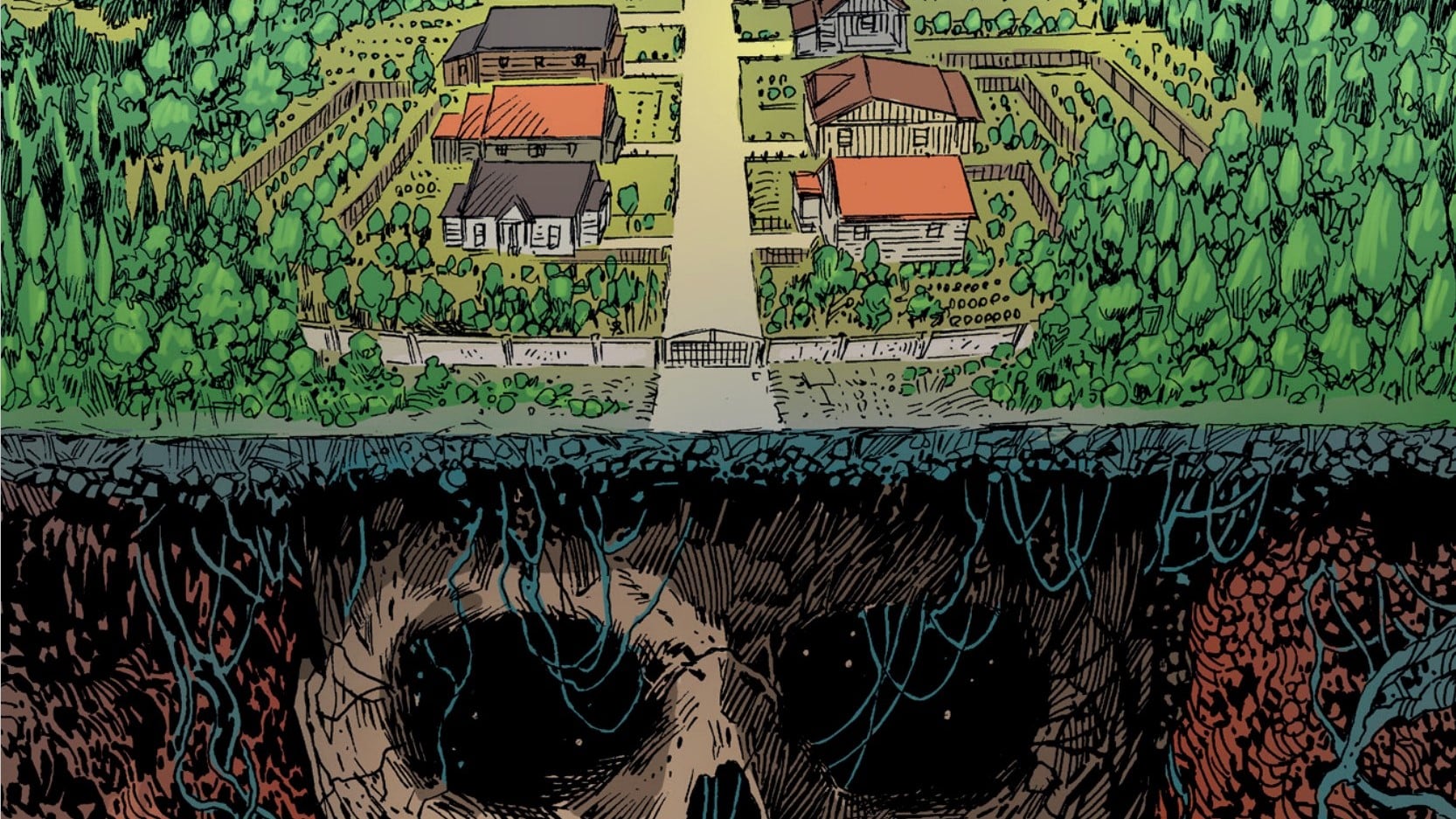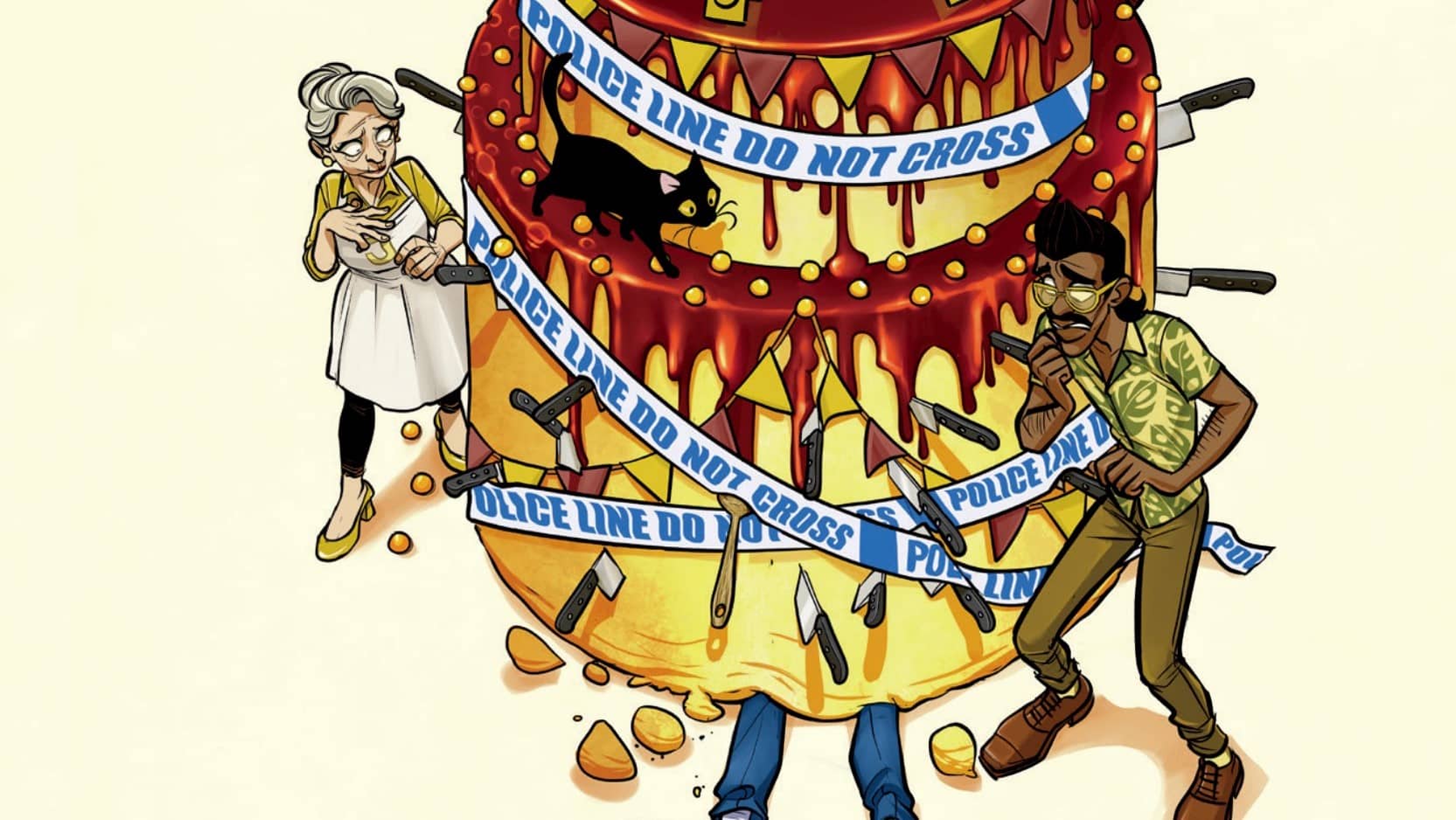What if reality was only as real as people believed it was? What if it could change depending on popular support? And what if the real breakout Image comic of 2020 was not a thing that purportedly had something to say about superheroes but actually had something to offer about the way in which conspiracy theories threaten our shared understanding of the world and our individual sanity? Will Nevin, Vishal Gullapalli and Forrest Hollingsworth assemble to break down the first three issues of The Department of Truth by James Tynion IV, Martin Simmonds, Aditya Bidikar, Dylan Todd and Steve Foxe.

Will Nevin: Welcome, welcome, welcome to ongoing Xavier Files coverage of The Department of Truth, a series that kicked me in the crotch with its first issue and kept on stomping with #2 and #3. It’s smart and gorgeous and just great (hard-hitting criticism there, Will), but I gotta say, I totally slept on the hype for what’s become my surprise book of 2020. Vishal, you and Zoe Tunnell wrote up the first issue for us, and I take it you paid more attention to this in the run-up to #1 than I did. Having gotten a look at two more issues, has this lived up to your hopes?
Vishal Gullapalli: It absolutely has. I was expecting a solid book where Tynion poked at a lot of the big conspiracy theories of the modern age and portrayed them through a horror lens along the lines of Something is Killing the Children. What I got instead was something that borders on a masterpiece. I genuinely believe that when it’s over, Department of Truth will be held up as a modern classic, a book that gets pointed at when people talk about Image’s big hits. This does not read like a book by two up-and-coming creators, it feels like a tour de force from some of the best creators in the business.
WN: “Masterpiece” is not a word we should throw around lightly, but it really fits here — this is the book that others (Say, maybe a series that Crosses Over) should aspire to be. To my mind, it’s the best, most creative thing at Image this side of Ice Cream Man.
And howdy, Forrest. Was this a series you were looking forward to, or were you an idiot like me?
Forrest Hollingsworth: I had the privilege of hearing positive words about the book prior to its release from genre-bending and boundary-pushing creators like Zac Thompson, Lonnie Nadler and Tynion himself, so I knew something was up, but I couldn’t have imagined anything of this kind of scale and impact. I have to echo Vishal’s thoughts that Department is well-positioned to be one of the best indie books of the era, and as a former moderator of a sizable conspiracy-theory memeposting Facebook group, it’s had a significantly direct impact on my own feelings and thoughts about the genre and the nature of the relationship between speculative fiction and reality, too.
WN: So what I think we hope to do with this ongoing coverage is talk about why this book fucks so hard and maybe give a few notes to the underlying conspiracy theories where we can, but really, Tynion has done so much of his homework, we probably won’t be adding much there. Sound good?
Book 1: Can You See?

WN: I don’t think we have to spend a lot of time rehashing the first issue since we (OK, Vishal and Zoe) done did it, but it was so smart to center the debut on the JFK conspiracy (probably the most famous one) and the flat-earth theory, something that started as a Christian fundamentalist proposition but has grown into a wider distrust of government and science — a fact Tynion notes in the book. The whole issue is a great primer for the series. Gets to the good shit in a hurry.
VG: Yeah, it was definitely a good move to focus on those two. The JFK conspiracy is one where most people can agree there was something a little fishy about it but would have varying degrees of confidence in the existence of an actual conspiracy. Meanwhile, the flat-earth theory is ridiculous and something most people would agree has little basis in reality. I would apologize for that last remark being incendiary, but honestly, I feel comfortable saying the official stance of this site is that the Earth is not flat.
Anyway, what I was getting at is that they picked two conspiracies that are really well known, and more importantly, not very controversial. It’s a good move to grow the story out of those, rather than something where more sensitivity is required (See: so many conspiracy theories borne of antisemitism). They also serve to highlight the point of the series — through the power of belief, anything is possible. You can make something fairly plausible into a reality, or you can make something impossible exist.
WN: I’ll go even harder, Vishal: All conspiracy theories are trash. Dirty, stinky (and in many cases) racist trash. But they’re fascinating to examine, and I think this book, as you describe its central conceit, handles them in a remarkable way: By function, if it’s in Department, it’s fiction.
FH: It’s a sharp and effective entry that sets up the premise plainly but also concedes a degree of throwing you into the deep end much the same way conspiracy theories (or MLMs or any other variation therein) themselves work. The main takeaway for me here is, as Vishal indicated, the idea of consensus reality.
There’s a lot of observable phenomena that indicate this idea can and does work on a smaller scale, such as folie a deux, the group of citizens in France who danced themselves to death, or even anti-vaccination theories and organized religion. However, Department does well to push the idea further, to the degree the Earth itself is flat and there is a select group of people who know, control and disseminate this information to seemingly nefarious ends. If the multitudinal and iterative conspiracies around this (There are extra continents, we’re in a bubble, the moon and sun are fake, etc.) cohered into one more logically based theory in real life, would it have more significant scientific or cultural staying power?
At what point does it become less ‘fun,’ even for people on the outside to mock, and more wholly regrettable? Department sets out to explore that, and what an equally stimulating and terrifying premise that is, to say nothing of the fantastically evocative and esoteric dialogue and the multilayered art that carries Twin Peaks’ and The X-Files’ calls to action equally.
Book 2: The Red Dragon Awakens

WN: With the second issue, we get an even better sense of what the gang hopes to do with this series in that we see the development of a series gimmick: a new/different conspiracy theory each month, with #2 focusing on the “Satanic Panic” of the 1980s and early ’90s. I can’t talk enough about the Satanic Panic — the idea that kids across the country were victims of literal occultic abuse gained so much traction that Oprah covered it in a strangely anti-Semitic way and law enforcement was actively looking for it. But we can’t mention the period without noting that children were really harmed here by the various parties who were coaching them through this absurd and traumatizing testimony — something, again, that Tynion brings up. Did that guy do his homework for this book or what?
FH: So the idea that Tynion wants to explore, and that I think you’re touching on Will, is pretty fascinating. The Satanic Panic is, third to JFK and the Flat Earth, probably one of the most well known and discussed conspiracy theories of all time. That being said, the primary focus of that discussion is that the relevant stories were (sometimes purposefully) fabricated, and not that American culture at large was experiencing a kind of mass gaslighting. It’s focused on the media presentation, the novels and the pageantry of scandal, and not on the hurt of real people — especially children — who are now of an age where they will try to discuss and process that pain.
Even within the text where more room could be allotted for fictitiousness, the supposed Satanic cult trauma, abuse, subterranean structural underbelly of the United States’ most trusted institutions, etc., was all fabricated, but the coerced confessions, and the inherent trauma therein, were very real. Thousands of American children, including our main character, experienced real trauma around a fictional event — it was, through a gross subversion of consensus reality, willed into existence. Department wants to investigate that, to say, “You were gaslit, and it was never given the proper import or weight.” There’s a lot of intrinsic and emotional and intellectually stimulating value to that.
WN: I especially like how our main character, Cole Turner, a Stanley Goodspeed-esque wonk who now finds himself in the field, has a personal connection to the Satanic Panic as he was one of the kids coached to admit an imaginary crime. Or was it? In general, it’s probably the most interesting thing so far about Turner, a character that’s not responsible for a lot in a book with so much going on. What’s your read on him so far?
VG: Turner’s backstory as explored in this issue makes him a really good protagonist for the series. His connection to the Satanic Panic is something that feels legitimate and believable, rather than a forced “Chosen One” style of story. It’s really fascinating to see someone whose actual life was affected by the consensus reality feel compelled to investigate it further. There’s a lot of room to explore the way that affects someone in the long term, how it shapes one’s worldview and remains a constant presence in one’s life. He has a lot of potential as a protagonist for the series.
FH: I think it’s a good, necessary narrative concession to have a main character who is just as susceptible to the wide-reaching effects of conspiracy theories in the United States as anyone is — Dale Cooper knew very very little about the metaphysical elements of Twin Peaks’ world, but he was willing to accept them, to find meaning in mysticism much the same way Mulder does. I also find he’s especially well positioned to be a kind of cipher for the specific dialogue I mentioned above — a signifier of the conversation Tynion is hoping to have with the book’s audience.
Book 3: What We Are Becoming

VG: This third issue is the first one that touches on something that’s still causing visible harm. Well, it’s not just one event, but being from the same area as Tynion, it feels pretty obvious that this was focusing on the Sandy Hook Elementary School shootings in 2012. This wasn’t something that happened super close to me, but it was close enough that the entire community was rocked by it happening. This issue is something that had every bit of potential to be handled poorly and offensively, and could easily have made me drop the book and disavow the creators entirely — but instead it was a really thoughtful and harrowing story that didn’t minimize the tragedy of what happened. By the end of the issue, I just felt sad. I’m pretty sure y’all aren’t from the tristate area that I grew up in, though. What’d you make of this one?
WN: I think if we stripped away all the flourishes — if we took away the slick art and the flashy presentation and all the rest of the stuff that’s made us flip over this series — and we were left with just the story of a woman dealing with grief and the strange, sad things that trauma can do to a person, I think we’d still have one of the finest floppies of the year. Even though it’s wrapped up in plenty of strangeness, #3 struck me as real and powerful.
And before we go on, let’s make two notes: 1) Fuck Alex Jones, the unnamed-but-defininitely-referenced source of the torment in this issue. Sandy Hook families are currently suing him for defamation, and I hope they take that shit to the cleaners. And, 2) False flags — the idea that governments or other organizations fake attacks to seize power or effectuate some other agenda — is another fascinating but ultimately bunk conspiracy theory given that we’re not even sure whether history’s most famous false flag was indeed an intricate plot or simply convenient timing.
But, yeah, I loved #3. A whole hell of a lot.
FH: You two have touched on the very specific ways this issue works, but I wanted to follow up on the thematic throughlines just briefly. Conflating Sandy Hook with the JFK, flat-earth and Satanic Panic theories is intentional. It is a means to address that all conspiracy theories are inherently hurtful on a communal and individual scale through giving appropriate weight to the most immediately damaging of them. It starts with the well known before pushing into harder areas, much the same way conspiracy theories themselves do. This is the same reason I became increasingly uncomfortable with moderating the aforementioned FB group — content went from laughing at flat-earth conspiracies to a more frequent discussion of Q that I found blatantly gross. Even if the idea is to point out how plainly ridiculous and detestable those things are, laughing at it gives it credence, and allows for that “coastal elites are laughing at you” kind of comissieration to take hold — OK in some circumstances, but also the damages of that should be readily apparent in 2020.
Be it along the axis of familial and communal trauma, or along political and religious lines, or even just on the basis of trustworthiness, conspiracy theories seek to undermine sources and authority unilaterally, and often unfairly — they blend fiction and reality much the same way the book does, and there’s staying power in that. There is also, of course, staying power in pointing out how many of these theories and their repercussions target and hurt children, some of our most vulnerable community members. Sandy Hook, particularly, is a good signifier of this — and numerous Q-adjacent theories are fixated on child trafficking, endangerment, etc., because it’s inherently easier to make normally morally upstanding people care about them (Hopefully they already do). Tynion rejects that, and along the same lines as the Satanic Panic focus says, “Your fascination with children being hurt is hurting them.”
Damn if that isn’t a worthwhile narrative thrust.
WN: That is a goddamned good point, Forrest — that this book is, in many ways, mirroring conspiracy theories by giving us the understandable, relatable bits first and expecting us to fall deeper and deeper into the pit. If that trajectory holds, we are going to be in some dark, weird places by the end of this. Also, it’s interesting that you bring up QAnon as something tied to the Satanic Panic with both having this obsession over children. Folks smarter than me have argued there are even deeper ties there, going back to blood libel against Jews and the core of anti-Semitism. And that could, by the way, be where we’re eventually headed with this series.
VG: In addition to everything y’all have brought up, I think the best part of this issue is that it also focuses on the ongoing harm done to the people who were caught in the wake of Sandy Hook — the mother of one of the dead children starting to question her own reality and start to believe that maybe it was all a hoax is terrifying for sure. But when Tynion peels it back at the end, it becomes something so much sadder. These groups peddling their misinformation and lies ended up preying on a mother who wanted nothing more than for her child to not be dead. A person who had lost more than any of them would be able to comprehend, and who would do anything she could to undo it. Even if that meant turning the tragedy into a fabrication. Tynion did a fantastic job making it clear that the people spreading these theories were fully in the wrong, but the people who buy into them occasionally have a much more complicated story.
Ultimately, after this issue, I feel like Department of Truth is a much more ambitious series than a simple summary of “it’s about conspiracy theories” can describe. It feels like more than that. Planetary (despite its writer being a predator) is frequently hailed as a love letter to the fiction of the 20th century — specifically the science fiction. I honestly feel like that’s what Department of Truth is to the 2000s. I’m not naive enough to claim that conspiracy theories only became widely believed in the last decade or two, but their prevalence has only increased with the adoption of the internet as a global means of communication, and social media is helping a lot of modern conspiracy theories gain more traction than they ever could before 2000. With the Trump administration, QAnon, antivaxxers and more, I feel like conspiracy theories have become an integral part of the story of the 21st century in a similar vein to science fiction in the 20th. Should it keep up what it’s doing, this book genuinely feels like it will be held in that regard or even higher, and deservedly so.

An Eye for an Eye, A Truth for a Truth
- Simmonds is the perfect artist to have on a project like this. The blending of multimedia, layering, intentional obfuscation and the like work exceptionally well for a story fixated on conspiracy.
- The Star-Faced Man is blatantly terrifying, and repeated imagery of him consuming children is grossly relevant.

